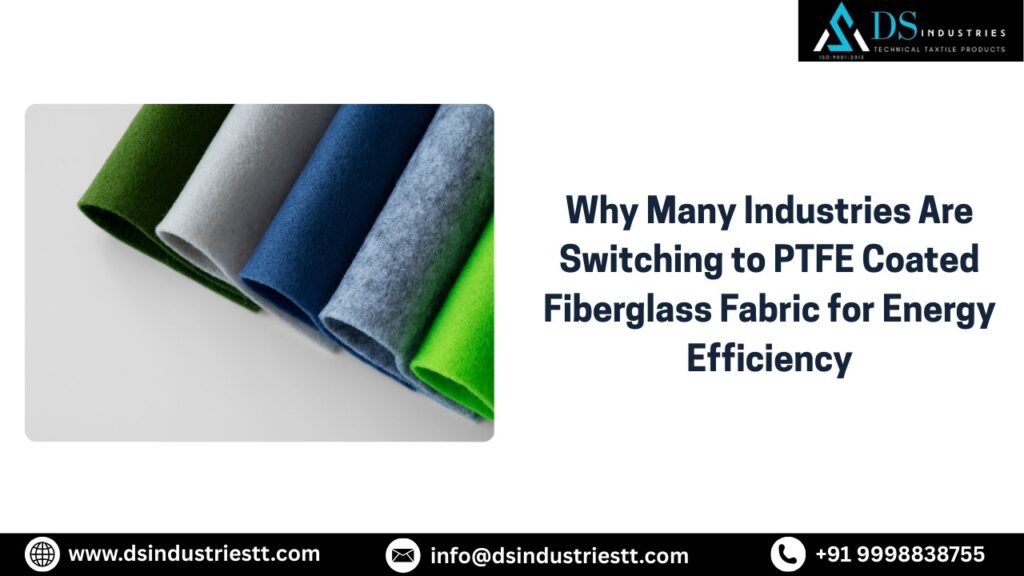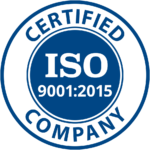
In the quest for greater sustainability and reduced operational costs, industries across the globe are adopting innovative materials that offer both performance and efficiency. One such material gaining rapid traction is PTFE coated fiberglass fabric. Known for its durability, thermal stability, and low energy requirements, PTFE coated fiberglass is increasingly being used to improve energy efficiency across multiple sectors.
Let’s explore why this fabric is becoming a go-to solution for energy-conscious industries.
1. Excellent Thermal Insulation
PTFE (Polytetrafluoroethylene) coated fiberglass fabric is highly resistant to extreme temperatures—often up to 260°C (500°F)—without compromising its structural integrity. This makes it ideal for applications such as heat sealing, insulation covers, drying tunnels, and protective thermal barriers.
By providing a robust insulating layer, PTFE-coated fabric helps retain heat within industrial processes. This results in reduced heat loss and more consistent internal temperatures, ultimately leading to lower energy consumption and increased system efficiency.
2. Low Friction and Non-Stick Properties
One of PTFE’s signature traits is its low coefficient of friction, which means less resistance during operation. This translates into reduced mechanical effort and energy needed in processes involving movement—such as conveyor belts or textile processing lines.
Its non-stick surface also ensures that materials glide smoothly across the surface, preventing product buildup and minimizing the need for frequent cleanups. Reduced cleaning means less downtime and lower energy costs associated with cleaning systems or stopping production lines.
3. Chemical and Moisture Resistance
In industries dealing with harsh chemicals or humid conditions, such as chemical processing, food production, and pharmaceuticals, PTFE coated fiberglass fabric acts as a highly resistant barrier. It doesn’t degrade easily, which not only extends the material’s life span but also reduces the energy and resources needed for frequent replacements or repairs.
4. Lightweight Yet Durable
Despite being lightweight, PTFE coated fiberglass fabric is incredibly strong and durable. Its high tensile strength allows it to withstand mechanical stress without tearing or stretching, meaning less wear and tear and longer service life.
A longer lifespan means fewer replacements and a lower overall energy footprint over time—especially when compared to heavier or less efficient alternatives.
5. Versatile Applications Across Industries
From automotive and aerospace to packaging, textiles, and food processing, this fabric’s versatility allows it to be used in a variety of energy-intensive environments. Whether used in curtains, conveyor belts, gaskets, or thermal covers, its ability to perform under pressure while conserving energy makes it a highly attractive option.
Conclusion
As industries seek sustainable ways to cut costs and reduce their environmental impact, materials like PTFE coated fiberglass fabric are proving to be game changers. Offering superior heat resistance, low energy consumption, and long-term durability, it aligns perfectly with the global push toward energy efficiency. It’s no wonder many industries are making the switch.
FAQ
1. What is PTFE coated fiberglass fabric?
PTFE coated fiberglass fabric is a high-performance material made by coating woven fiberglass with PTFE (Polytetrafluoroethylene), offering excellent heat resistance, durability, and non-stick properties. It’s used in various industrial applications to improve energy efficiency and operational reliability.
2. How does PTFE coated fabric improve energy efficiency?
Its thermal insulation properties reduce heat loss in high-temperature processes, helping industries maintain consistent internal temperatures. This significantly lowers energy consumption in operations like drying, curing, or sealing.
3. Which industries benefit most from this fabric?
Industries such as food processing, packaging, chemical, textiles, and aerospace benefit the most. These sectors rely on heat-intensive processes, making PTFE coated fiberglass fabric ideal for reducing energy waste and enhancing productivity.
4. Is PTFE coated fiberglass fabric durable?
Yes, it offers excellent durability. The combination of fiberglass strength and PTFE’s chemical resistance ensures long service life, reduced wear and tear, and fewer replacements—saving energy and material costs over time.
5. Can it withstand extreme temperatures?
Absolutely. PTFE coated fiberglass fabric can withstand temperatures up to 260°C (500°F), making it perfect for thermal insulation, conveyor systems, and protective barriers in high-heat industrial environments.
6. Does using PTFE coated fabric reduce maintenance?
Yes. Its non-stick surface prevents buildup of materials, reducing the need for frequent cleaning and minimizing downtime. This leads to lower energy and labor costs in maintenance-heavy applications.


